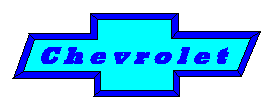 |
|
1931 Chevrolet
- Torque Settings |
| |
|
Updated:
01/30/2011
| Using the right
nut and bolt when restoring your car can make a big difference.
Everybody knows that stainless steel is much less likely to rust when
used on a car. But it's just as important to know when to use a
Grade 5 bolt in certain areas. One of these might be when you are
mounting the body to the frame. Grade 2 bolts are the most common used
material and they work just fine as long as you paint them with primer
and cover with a color coat. This simple preparation will go a
long ways towards preventing them from rusting. And THAT might be
something that you're thankful for a few years down the road when you
have to remove them again. ha! |
Bolt Grade Markings and Strength Chart
| Head Marking |
Grade and
Material |
Nominal Size Range
(inches) |
Mechanical Properties |
Proof Load
(psi) |
Min. Yield Strength
(psi) |
Min. Tensile Strength
(psi) |

No Markings |
Grade 2
Low or medium carbon steel |
1/4 thru 3/4 |
55,000 |
57,000 |
74,000 |
| Over 3/4 thru 1-1/2 |
33,000 |
36,000 |
60,000 |

3 Radial Lines |
Grade 5
Medium Carbon Steel, Quenched and Tempered |
1/4
thru 1 |
85,000 |
92,000 |
120,000 |
| Over
1 thru 1-1/2 |
74,000 |
81,000 |
105,000 |

6 Radial Lines |
Grade 8
Medium Carbon Alloy Steel, Quenched and Tempered |
1/4
thru 1-1/2 |
120,000 |
130,000 |
150,000 |
| Stainless markings vary. Most stainless is non-magnetic |
18-8 Stainless
Steel alloy with 17-19% Chromium and 8-13% Nickel |
1/4
thru 5/8 |
|
40,000 Min. 80,000 – 90,000 Typical |
100,000 – 125,000 Typical |
| 3/4
thru 1 |
|
40,000 Min. 45,000 – 70,000 Typical |
100,000 Typical |
| Above 1 |
|
80,000 – 90,000 Typical |
|
Hosted by: Bill Barker
Bellevue, WA, USA
| |
